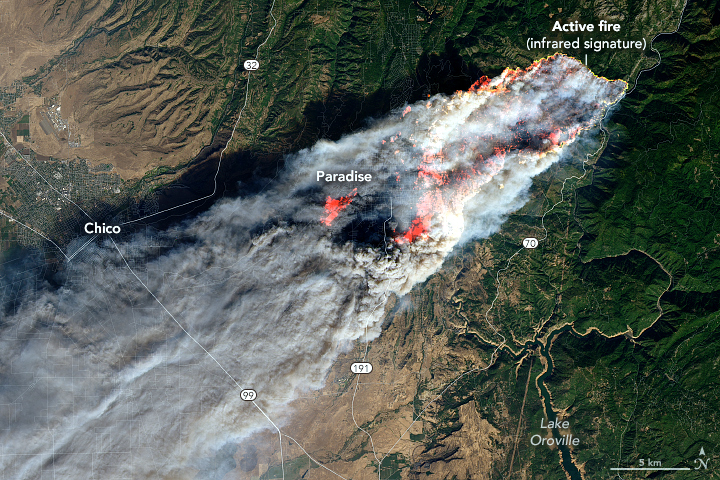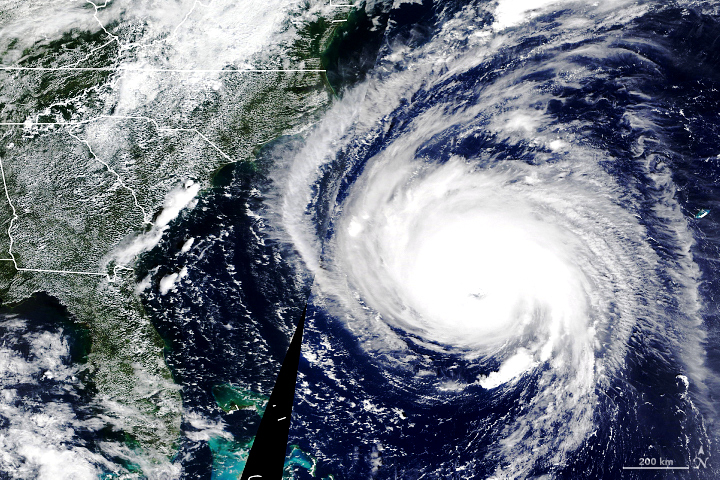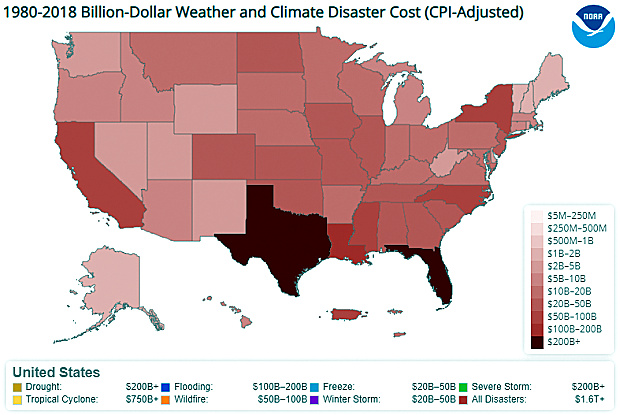Disasters Causing Losses in Billions of Dollars
Billion Dollar Disasters Map, 2018 (credit: NOAA)
It is now official: 2018 was one of the most costly years in the United States for disasters, running into the billions of dollars in recovery costs. The National Atmospheric & Oceanic Administration (NOAA) has released a report on the expenses incurred by the States from hurricanes, floods, fires, drought, and other extreme weater events in 2018. According to NOAA's National Center's for Environmental Information (NCEI):
"Since 1980, the U.S.A. has sustained 241 weather and climate disasters where the overall damage costs reached or exceeded $1 billion. The cumulative cost for these 241 events exceeds $1.6 trillion. In 2018 alone, the USA was impacted by 14 separate billion-dollar disaster events included: two tropical hurricanes, eight severe rainstorms, two winter storms, droughts, and wildfires. The past three years (2016-2018) have been historic, with the annual average number of billion-dollar disasters being more than double the long-term national average."
Over the 38-year time, NOAA used storm-incurred costs for each state greater than $1 billion in recovery expenses. Seven weather events were considered: droughts; hurricanes; flooding; wildfires; freezes; winter storms; and extreme rainfall.


Camp Fire, California 11-8-2018 (credit: NASA) Hurricane Florence, North Carolina 9-12-2018 (credit: NOAA)
Over the period, every state experienced at least one billion dollar disaster event with Texas experiencing the most, 104. Texas was also one of the few states impacted by all seven types of billion dollar weather disasters.

NOAA's report concludes:
"Billion-dollar disaster events are becoming an increasingly larger percentage of the cumulative damage from the full distribution of weather-related events at all scales and loss levels. This reflects a combination of increased exposure, vulnerability, and the fact that climate change is playing an increasing role in the increasing frequency in some types of extremes that lead to billion-dollar disasters."
The new analysis calculates only the costs to the USA for repairing infrastructure and insurance related damages. It did not address the impacts to wildlife. However, one 'snapshot' came from Queensland, Australia where Extreme heat wiped out almost one third of Australia's spectacled flying-fox population. The bats simply fell dead from their day-time roosting trees due to heat stress. The dead bats provided a grim demonstration of the 19th Century 'canary in the coal mine' metaphor, which warned miners of toxic fumes, for them to act quickly.
In the 21st Century, climate change amplifying extreme weather events should force us to act as well before we go the way of the bats.
WHB